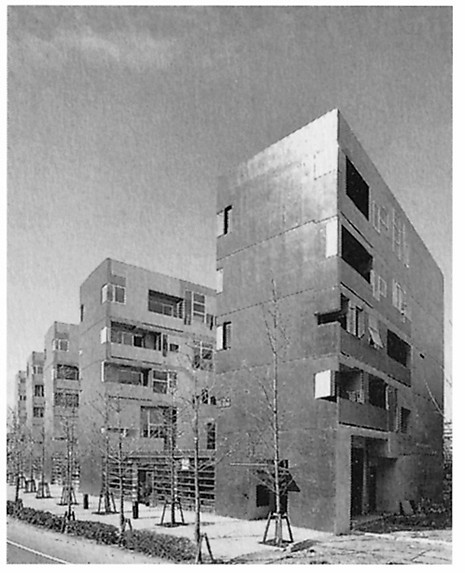Description
The aim of the housing strategy: variety of apartment types and, in each individual apartment, great flexibility of spatial divisions by means of rotating wall sections and shelving units. (Spatial division according to times of day: bedrooms become part of the living room/spatial division according to periods of life: parts of the apartment can be separated off.) The problem of the site: the street is in the south. Hence the comb-shaped plan, with inner courtyards on the south side (the courtyards are filled with water basins that reflect the light and are intended to symbolize peace and tranquility). Covered walkways with differing orientation, south or north, in part enclosed and in part open; stairwells located at both ends of the building. Basically there are two arrangements for the maisonettes: 1. The maisonettes have their living areas in the individual wings; the sleeping area, set off by one floor and pushed toward the back, lies in the continuous bar (light from east, south, west, north). 2. The maisonettes are stacked on top of each other in the continuous bar (light from south and north). Meandering paths with intermediate landings i.e. stairs lead from the entrances past one or two bedrooms to the central living area, which frequently provides direct access to two additional bedrooms.
Drawings
Floor plan diagram, scale 1:500
Apartment access diagram
Site plan, scale 1:2000
Schematic plans of the 2nd to 5th floors, from bottom to top
2nd and 3rd floor: Duplex apartments A, B, and C (lower floor), scale 1:200
4th and 5th floor: Duplex apartments C (top floor), D, E, and F, scale 1:200
Section with courtyard elevation
Cross Section through linear block with elevation of side wing
Photos

Exterior view
Originally published in: Oliver Heckmann, Friederike Schneider (eds.), Floor Plan Manual Housing, fourth revised and expanded edition, Birkhäuser, 2011.